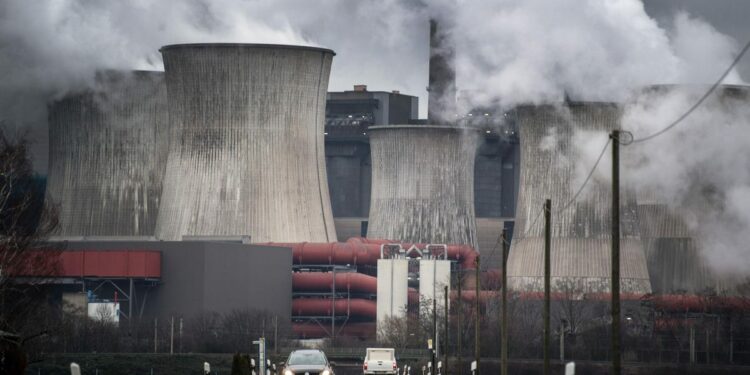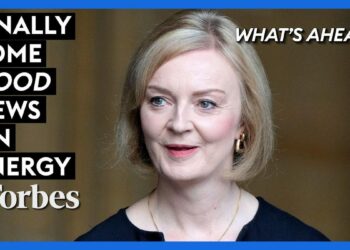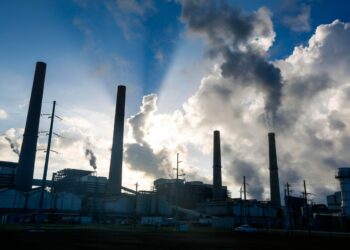Loren Steffy, UH Energy Scholar
After the lackluster results of the United Nations-sponsored climate talks in Scotland late last year, our approach to climate change has shifted from ambition to aspiration.
Expect to see more companies touting — and more lenders funding — aspirational “net zero” plans for eliminating carbon emissions. Many of the plans rely on models that increasingly reflect wishful thinking rather than reality.
The 200 countries who attended the COP26 conference in Glasgow were asked to cut greenhouse-gas releases by half in 2030 and reduce them to zero by 2050. If that were to happen, there’s still a chance we could limit the rise in global temperatures to the 1.5 degrees Celsius that climate scientists say is critical for avoiding the most catastrophic effects of global warming.
But the COP26 conference also made it clear that chance is slim and growing slimmer. Right now, current pledges won’t achieve the goal. A new UN report found commitments from the 2015 climate conference in Paris would put us at 2.7 degrees. Even with additional pledges made in the past six years, we’re still likely to come in above 2 degrees.
Despite all the hype of the Paris Agreement, many of the countries involved haven’t implemented policies to support their commitments. None has adopted changes strong enough to meet their own goals under the agreement, according to an analysis from Climate Action Tracker, which studies government actions on climate.
“Glasgow seemed to signal the end of the highest ambition of the Paris Agreement,” said James Dyke, associate professor in earth systems science and assistant director of the Global Systems Institute at the University of Exeter. “There’s still this narrative that we can keep 1.5 alive, and I just don’t think that’s credible anymore.”
Some climate scientists have been worried about meeting the 1.5-degree threshold since it was first proffered at the Paris Agreements six years ago. Dyke is one of the few who’s been willing to voice his concerns.
But such doubts are overshadowed by the pronouncements from government and business leaders. From energy to real estate to distilleries, industry executives are pledging to “achieve net zero,” a euphemism for eliminating carbon emissions. In Glasgow, a coalition of 450 private banks insurers, asset managers and other financial institutions pledged $130 trillion to move the global economy from fossil fuels to clean energy. Even the newly nominated vice chair of the Federal Reserve wants climate to figure into the central bank’s approach to monetary policy.
Increasingly, big money is fueling unbounded optimism despite emissions rebounding at the second-highest rate ever recorded and our continued — and growing — short-term reliance on fossil fuels. Rather than cutting emissions, we are on a path of “continuing increases and maybe if we’re lucky some kind of plateau,” Dyke told me.
Dyke has become one of the leading critics of net-zero programs. Earlier this year, he teamed up with two other climate researchers — Robert Watson, an emeritus professor in environmental sciences at the University of East Anglia, and Wolfgang Knorr, a senior researcher in physical geography and ecosystem science at Lund University — in declaring net-zero a “dangerous trap.”
They argue that while net zero is fine in principle, it reduces the urgency of cutting emissions now in the hopes of that unproven technology will save us later.
“Net zero has licensed a recklessly cavalier ‘burn now, pay later’ approach which has seen carbon emissions continue to soar,” they wrote.
This year has shown us just how difficult cutting carbon output will be. Despite promises of reduction and an increase in renewable energy, most developed countries found their economic recovery from the pandemic threatened by rising oil prices. As a result, they resorted to tactics designed to boost short-term hydrocarbon production and lower prices, which in turn, increases fossil fuel use. Biden administration officials have even admonished the oil industry for not boosting domestic production.
Rushing to increase oil and gas drilling at the first sign of economic pain underscores the trap that Dyke and his colleagues see with net zero.
Climate models have been infused with what Dyke calls “magical thinking.” They simply discount such short-term increases by factoring in future benefits from technology such as carbon capture — which hasn’t been done on a commercial scale — and create a path to a net zero goal.
“Their implicit promise is that market-based approaches will always work,” Dyke and his colleagues wrote. “This meant that discussions about policies were limited to those most convenient to politicians: incremental changes to legislation and taxes … In the end, the mere prospect of carbon capture and storage gave policy makers a way out of making the much needed cuts to greenhouse gas emissions.”
So far, though, the only demonstrated carbon capture technology is using collected CO2 for enhanced oil recovery, which is essentially collecting carbon now to make more later.
As you might expect, Dyke’s views have drawn staunch criticism, not because they are wrong, but because we have nothing else. After all, companies may be overstating their reduction capabilities, but at least they’re doing something, even if it’s just recognizing the importance of addressing climate change through their operations.
Certainly, as U.S. climate envoy John Kerry said in Glasgow, we don’t want the perfect to be the enemy of the good. But at the same time, giving companies, no matter how well-intentioned, the cover to lull their executives, shareholders and the public into a false sense that they have emissions under control poses a significant threat as well.
As we move closer toward a deepening climate crisis and net zero fails, it’s likely the responses will become even more divorced from reality. Look for an embrace of geoengineering or other unproven scientific salvation.
Dyke warns that our overconfidence in net zero could be setting us up for catastrophic failure at a time when we have just a few decades to go from producing 40 billion tons of carbon dioxide annual to removing tens of billions.
Viewed in this context, it’s easy to see why some of the biggest players in the fossil fuel industry have embraced net zero. But simply planting more trees, spending even a few billion on windmills or shifting to cleaner fossil fuels won’t be enough to meet net-zero goals.
“The people involved in these [corporate net zero] reports are working in good faith, but they’re working for organizations which are still committed to generating value for shareholders by extracting fossil fuels,” Dyke told me. “The narratives are all basically around the justification for continual extraction and exploitation of fossil fuels.”
That’s because politicians and business leaders prefer to delay the tough decisions that climate change presents. Most of today’s leaders will be out of office or retired before the full consequences of hit the economy.
As a result, net zero has become at best a chance to buy us some time — or at least make it feel that way. But net zero is also the least bad option from a policy standpoint, and it requires the least political courage. We can’t allow it to lull us into complacency by convincing us we can do less now and hope a technological breakthrough will save us later.
Loren Steffy is a writer-at-large for Texas Monthly, an executive producer for Rational Middle Media and a managing director for 30 Point Strategies, where he heads the 30 Point Press publishing imprint. He is the author of five nonfiction books: “Deconstructed: An Insider’s View of Illegal Immigration and the Building Trades” (with Stan Marek), “The Last Trial of T. Boone Pickens” (with Chrysta Castañeda), “George P. Mitchell: Fracking, Sustainability, and an Unorthodox Quest to Save the Planet, The Man Who Thought Like a Ship,” and “Drowning in Oil: BP and the Reckless Pursuit of of Profit.” His first novel, “The Big Empty,” was published in May 2021.
Steffy is the former business columnist for the Houston Chronicle and previously was the Dallas (and Houston) bureau chief and a senior writer for Bloomberg News. His award-winning writing has been published in newspapers and other publications worldwide. He has a bachelor’s degree in journalism from Texas A&M University.
UH Energy is the University of Houston’s hub for energy education, research and technology incubation, working to shape the energy future and forge new business approaches in the energy industry.











